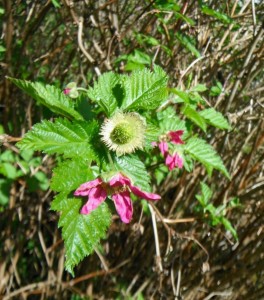
News/Reports
Bowser ER #135 Overview: Biological and Physical
To protect a highly productive forest ecosystem and wetland representative of the south-eastern coast of Vancouver Island for research and educational use.
Physical:The reserve is located in the Nanaimo Lowlands Ecosection. It has uniform gentle slopes and small wet basins. The soils are developed on a mosaic of colluvial (slopewash) till and marine parent materials.
Biological: The reserve contains a 120 year old forest (in 1993) that established after a fire. A community of Douglas-fir and very vigorous sword fern occupies most of this forest. Local plant indicators of rich sites for Douglas-fir forests including devil’s club, vanilla leaf , trillium, maidenhair fern, lady fern, cut-leaved foamflower, three-leaved foamflower, and Siberian miner’s lettuce occur over most of the area.
Lesser, imperfectly drained portions around a wetland are dominated by grand fir and red alder, with a similar ground cover of sword fern. Poorly drained pockets with impervious subsoils are scattered throughout the reserve and support a swamp forest combination of western redcedar and red alder, with skunk cabbage, giant horsetail and lady fern forming a lush and tall herb layer. On more sloping terrain a Douglas-fir – dull Oregon grape community is common and along a stream a riparian red alder – salmonberry – lady fern combination occurs. Two of the plant associations found within Bowser ER, the grand fir/dull-Oregon grape and the western redcedar / vanilla leaf ecological communities, are ranked as S1 or “Critically Imperilled”. There are also several large mature examples of western white pine that have escaped the blister rust.
In the south-eastern part of the reserve a shallow pond is present which is surrounded by sedge meadows and stands of hardhack.
Threats:
Climate Change: This ER is in the driest variant of the CWH. With climate change it is expected that it will become drier and take on more characteristics of the CDF. Signs of this would be the loss of grand fir and western redcedar and changes in the distribution of wetland shrubs such as hardhack.
Adjacent land Use: Impacts caused from land development activities near the ER boundary
Bowser ER is surrounded by private land. The ER is subject to boundary encroachment by private land owners.
Illegal log harvesting and cedar bark stripping from ER has been noted in the past
Illegal Activities: Marijuana plantations found in the ER
ER Warden Activities:
- Monitor/report illegal activities where observed
- Survey flora and fauna present in ER
- Monitor for invasive plants (control or eradicate wherepossible)
- Removal of domestic and commercial waste
SIGNIFICANT SPECIES/ECOSYSTEMS
grand fir / dull Oregon-grape association– red listed
western redcedar / vanilla leaf association–red listed
alder, red (Alnus rubra)
broom, Scotch (Cytisus scoparius) (exotic, invasive)
devil’s club (Oplopanax horridus)
Douglas-fir (Pseudotsuga menziesii)
fern, lady (Athyrium filix-fernina)
fern, southern maidenhair (Adiantum capillus-veneris)
fern, sword (Polystichum munitum)
fir, grand (Abies grandis)
foamflower, cut-leaved (Tiarella trifoliate var. lacinata)
foamflower, three-leaved (Tiarella trifoliate var. trifoliata)
horsetail, giant (Equisetum telmateia)
hardhack (Spiraea douglasii ssp. douglasii)
miner’s-lettuce, Siberian (Claytonia sibirica)
Oregon-grape, dull (Mahonia nervosa)
pine, western white (Pinus monticola)
redcedar, western (Thuja plicata)
salmonberry (Rubus spectabilis)
sedge, Sitka (Carex sitchensis)
sedge, slough (Carex obnupta)
skunk cabbage (Lysichiton americanus)
thistle, Canada (Cirsium arvense var. horridum) (exotic, invasive) trillium (Trillium ovatum var. ovatum)
vanilla-leaf (Achlys triphylla)
Fauna
None mentioned

